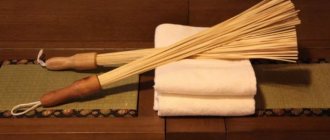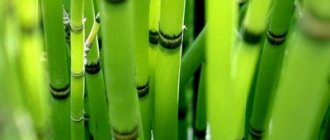- October 18, 2018
- Houseplants
- Natali Michaelis
The flower that will be discussed in today's publication is a very beautiful, perennial, decorative deciduous plant that belongs to the Marantaceae family. In its natural habitat, arrowroot, a photo of which is presented in the article, grows in tropical, swampy, forest areas in South and Central America. In Europe, this plant appeared only in the 16th century and was named after the famous botanist Bartolomeo Maranta. At that time he lived in Venice.
General description of arrowroot
These indoor plants can reach a height of 30 cm. The wide oval leaves are decorated with picturesque paintings. The length of the leaf plate is about 15 cm. Depending on the type and variety of arrowroot, a photo of which can be seen in this article, they have different colors, ranging from light green to almost black. There may also be pea-shaped spots on the leaves. The inside of the foliage may be blue, reddish or green. The photo with arrowroot shows that its petioles are short. In young specimens they point upward, but over time, if you do not provide them with additional support, the petioles spread. Small flowers begin to gather in inflorescences in the form of spikes or panicles.
Quite often, arrowroot is popularly called “Miranda flower” or “prayer plant” due to its unusual reaction to light. If the flower is dark indoors, or with the arrival of night, the foliage rises up, after which the outlet is completely closed. As the light gets brighter, the foliage unfolds again, taking a horizontal position. In science, this is explained by the fact that the leaf plates of this crop have special pads that are filled with water, due to which such turns are observed. In their natural habitat, Miranda flowers, photos of which are in this article, grow at the very bottom of dense forests. Therefore, they need to somehow receive at least a small amount of light through the crown of trees and bushes.
Overview of genera and their species
The arrowroot family has about 400 species. They are divided into 30 genera. The most popular of them are arrowroot, calathea, stromanta and ctenantha. They all require approximately the same care and maintenance. Flower growers note that there are no particular difficulties in growing, but it can still be difficult for beginners.
Maranta
If we are talking about indoor arrowroot, it can reach a height of only 20-30 centimeters. In the wild, this plant grows up to 1.5 meters. Among the features one can note the presence of rather short lodging shoots.
It is the arrowroot that is considered the flower that requires the least care. Indoor plants cannot always please their owners with flowering. If this happens, the buds turn out to be quite small, with petals of a soft purple or white color.
Among indoor plants, there are 7 varieties of arrowroot. Most often, gardeners choose three-color or two-color, Kerkhoven or Massange arrowroot.
Three-color can be called the most popular. It has leaf blades with bright red veins that are pink underneath. Around the stripes there is a yellowish or pale green halo, spreading out in spots towards the edges and at the same time becoming darker. The bicolor variety is distinguished by reddish-brown petioles and slightly wavy edges. There is a small fluff along the bottom of the leaves.
For inexperienced gardeners, the easiest way to grow Kerkhoven's arrowroot. She is the least capricious and does not require serious care. However, it looks no less bright and extravagant than other varieties.
Calathea
This variety has wide leaves with a spectacular and bright pattern of various shades. The pattern consists of spots and stripes. Such plants look very original, but you will have to take care of their care.
Calathea is quite tall and slender. If desired, it can be grown in a regular flower pot, but experts recommend placing the plants in a terrarium or organizing a “bottle garden” for them. They are quite capricious and cannot tolerate drafts. They are very sensitive to what kind of water will be used for irrigation. For active development, they need air with humidity in the range of 85-100 percent.
Some varieties react very negatively to the spraying procedure. They cannot be kept in the shower for a long time. They can have both beautiful, original shapes and nondescript leaves. However, they are distinguished by bright flowering. The most popular are Calathea saffron, Makoya, painted and pinkish-colored.
Stromantu
Externally, this plant resembles arrowroot, but the color of the leaves is closer to calathea. It can reach a size of 70-80 centimeters in height, while the leaves grow up to 20-35 centimeters. Their background can be anything. Some are distinguished by their variegation or the shine of satin. The lower part has a burgundy tint.
Stromantha can be called a plant for which the conditions of maintenance and care are the most important. Includes 13 varieties, but few take root at home. The most popular are the pleasant and blood-red stromanta.
Ktenantu
The leaves of this plant are arranged in a dense rosette, the tiers of which are divided by internodes. It must be said that the flower looks like a calathea. It is quite demanding in terms of conditions, so it is not recommended for growing for beginners.
The leaves are quite large, oval or oblong in shape. They are asymmetrical, which is why they often differ from other members of the family. They cannot boast of abundant flowering, and the inflorescences do not look very impressive. Among indoor plants, the most popular variety is Oppenheim.
Arrowroot white-veined (or white-veined)
The homeland of this variety of arrowroot is Brazil. The plant has tuberous roots. The leaf blades have an elliptical shape. The leaves grow up to 15 cm long and up to 10 cm wide. The leaves are dark green on the outside and have a silver stripe in the center. There are light green patterns along the entire leaf blade, as well as white lateral veins.
The lower surface of the leaf blade may be reddish or blue-green. The petioles grow no more than 2 cm in length. These indoor flowers (arrowroots) can be found very rarely as a cultivated plant. In most cases, only its varieties are grown.
Tricolor arrowroot
When looking at photos and names of arrowroot indoor plants, you should definitely mention the tricolor appearance. This crop has oval-shaped foliage that grows up to 30 cm in length. The width of the leaf plate reaches 6 cm. The main color of the velvety surface on the outer surface can be dark green or light green. It also shows distinct red veins and has yellowish-green or green spots in the center. A feather-like pattern can be seen on the sides.
The reverse surface of the leaf blade of this type of arrowroot has a crimson color, as well as pinkish veins. The flowers of this plant are light lilac in color. This species is popularly called the red ridge herring.
Types of domestic arrowroot with photos and names
The genus Maranta includes more than 40 species. Let's look at the most popular ones that can often be found on sale.
Arrowroot tricolor, tricolor
The oval leaves reach a length of 12-14 cm. The edges of the plates are light green, closer to the middle along the entire length there are swamp-colored spots. From the burgundy-red central vein, rays of the same color extend to the sides. The flowers are purple and small. The height of the bush does not exceed 35 cm.
Arrowroot white vein
This is a low plant with large leaves (up to 14 cm). The main color of the plates is dark olive. The midrib is pale green, with light blotches next to it along its entire length. Almost white “rays” emanate from the middle of the plate, which is why the plant got its name.
Arrowroot black Massanzha
The edges of the plates of this type of “praying grass” are green. The core of the leaves is light. Along it there are rows of spots of almost dark brown color. The plant reaches a height of 25-30 cm.
Maranta Kerkhovina
This is the most popular species among amateur gardeners. The leaf blades have a uniform green color and veins do not stand out on them. There are two rows of brown spots of irregular shape along the entire length.
Some consider arrowroot a capricious plant. This is not an entirely true statement. It is not at all difficult to comply with the above parameters. It is enough to devote 5-10 minutes daily to the “praying grass” so that it pleases the gardener with lush, spectacular foliage.
Two-color arrowroot
This type of plant is less common. The photo with the Miranda bicolor flower shows that the leaves have wavy edges, and they reach 15 cm in length. The leaf plate is green on top, with brown and dark green spots on the surface near the central vein. The leaves below are pubescent, reddish in color. Unlike other varieties, this arrowroot does not form tubers.
Types and varieties of Maranta
Maranta leuconeura
Leuconeura, translated into Russian sounds like “white veins”, this species is called white-veined arrowroot. Although in fact, the color of the long veins varies from white to pink. But the spots near the leaf axis are white or light green, which contrasts with the main dark background.
The leaves are elongated, heart-shaped at the beginning and blunt at the end, approximately fifteen centimeters long and nine centimeters wide.
Maranta kerhovena
A special feature of Maranta Kerkhovena is her miniature size - her height does not exceed twenty-five centimeters. Unlike other species, its veins are not brightly colored, but have an interesting relief shape.
The leaf structure is the same as that of Maranta white-veined. But Kerkhovena’s dark green, sometimes brown spots, located parallel and symmetrically relative to the central axis, are fascinating. And on the inside the leaf is purple or pale blue. Inflorescences are arranged together in several pieces.
Maranta erytrophylla
Red-veined arrowroot combines shades of red, dark green and mint, which is why it is sometimes called tricolor arrowroot. From its name it is clear that the bright red veins attract attention. The leaves, as a rule, are slightly smaller than those of other varieties: length up to thirteen centimeters, width up to five centimeters.
On a dark green background, the central part is separated by zigzag mint spots, and a pale shade of green is shaded along the edges of the leaf blade. The inner part has a purple tint. And the small flowers are lilac.
Maranta arundinacea
Reed arrowroot is quite different from previous species, at least in size. The height of the plant reaches one hundred centimeters, and the length of the leaves is twenty-five centimeters. Elongated oval shape. This plant is adapted to a very humid climate - leaves that are pubescent on the inside.
Their veins are not visible, but the spectacular combination of white stripes and an olive background is immediately noticeable. Beige inflorescences.
Arrowroot flower: photo of a houseplant
Maranta Kerkhoven
Photos of Kerkhoven's arrowroot flowers show that the plant is quite short, growing no more than 25 cm in height. The foliage is oval in shape and no more than 15 cm in length. The leaf blades are located on low petioles. The leaves are bright green on top and also have a brown or dark green pattern in the form of feathers or peas.
A white stripe runs along the central vein. The bottom of the leaf plate can be blue or red. The white flowers are quite small, collected several times in small inflorescences. Thanks to this unusual coloring, arrowroot is often called a frog.
Features of care
What is home care? The photo with arrowroot shows how attractive this plant can grow. However, it is worth paying attention to the fact that this crop is very capricious in care and cultivation. The homeland of this plant is the tropics, therefore, if the arrowroot is not provided with the appropriate conditions, it will not forgive any mistakes, as a result of which it will not be possible to grow a beautiful and healthy flower at home.
Above was a description of some varieties of arrowroot with photos. Caring for a plant at home requires compliance with certain rules, so you should carefully select the variety for breeding.
Lighting rules
Arrowroot is a very shade-tolerant plant, so it should not be kept on southern windowsills. But if there is no other possibility, then it will be additionally necessary to create good shading. In bright light, the crop loses its decorative coloring, and the foliage decreases in size. The same will happen due to low light in the room, the lack of which can be easily determined by the leaves raised up. It should be noted that this flower responds positively to artificial lighting, for which fluorescent lamps are used. They must be used for 16 hours every day.
How to care for arrowroot at home
When grown at home, arrowroot, due to its origin, behaves quite capriciously . This is a plant from the tropics, and if you do not provide it with the appropriate conditions, it will not forgive any mistake, and it will not be possible to grow a flower healthy and beautiful.
The most hardy in the conditions of our apartments is Kerkhoven's arrowroot, so if you do not have time to care for arrowroot, or lack experience, then it is better to breed this particular variety.
Lighting
Arrowroot is a fairly shade-tolerant plant, so you should not place it on south-facing windows, or you need to create fairly good shading. In bright light, it will lose its decorative coloring, and the size of its foliage will decrease; the same can happen in low light, the lack of which can be determined by the leaves constantly raised up.
The flower reacts positively to artificial lighting using fluorescent lamps for sixteen hours.
Air temperature and humidity
Arrowroot is a heat-loving plant, so in summer it must be kept at a temperature of twenty-two to twenty-five degrees, and in winter, when it is in a state of relative rest, it can be lowered to fifteen degrees, but not lower. Drafts and sudden temperature changes are also dangerous for her.
The air humidity in the room should be high, about ninety percent. Therefore, daily spraying of the leaves with well-purified water is recommended. If lime is present in it, the leaves may become covered with white spots. A monthly warm shower is also beneficial for arrowroot.
Watering and fertilizing
Watering arrowroot should be done with warm and well-purified water. The soil should always be slightly moist in spring and summer. In winter you need to let it dry out between waterings. Curled leaves can indicate a lack of moisture.
Fertilizing of arrowroot begins in April and ends in early September. It is carried out using liquid complex mineral fertilizers twice a month in accordance with the instructions. It should be remembered that the plant reacts very sensitively to an excess of nutrients in the soil.
If arrowroot remains in normal conditions in winter, you need to fertilize it once a month and dilute the fertilizer by half. If it is placed in resting conditions, then this should not be done.
What is gardenia jasmine and what care it needs at home, look here:
What to do if gardenia leaves turn yellow is written in this article.
This guide details how to propagate gardenias at home.
Air humidity and temperature
In order for the plant to be as beautiful as in the photo, the arrowroot flower must be kept in a room with an air temperature of 22-25 degrees in the summer. In winter, a period of rest begins, so the air temperature in the room drops to 15 degrees, not lower. You should also pay attention to the fact that sudden changes in temperature and drafts are dangerous for the flower (Miranda does not like this). Indoor air humidity should be quite high, being about 90%. It is for this reason that it is recommended to spray the leaves of the plant with clean water every day. But if there is lime in the water, the leaf blades may become covered with whitish spots. Maranta also prefers to take warm showers periodically. It is recommended to do this once a month.
Growing
The plant is quite demanding in care and needs to follow a number of recommendations.
Lighting
Maranta prefers partial shade and diffused light.
Direct rays of the sun are contraindicated for her. The plant reacts to changes in lighting by moving its leaves:
- with sufficient lighting they occupy a horizontal position;
- when there is a lack of light, they are positioned vertically, forming a closed rosette.
Temperature
In spring and summer – 20-26 °C, in autumn and winter – from 16 to 20 °C.
Arrowroots love heat very much, but overheating is destructive for them. During the dormant period, which lasts from October to February, the plant is comfortable at 18-20 °C.
The plant is sensitive to sudden changes in temperature and drafts, so in summer it should not be kept outdoors.
Watering and its features
Arrowroots need abundant watering.
In the warm season, the soil should be slightly moist. In autumn and winter, watering is carried out rarely, allowing the soil surface to dry out. Irrigation water should be warm and soft.
It is important to prevent waterlogging of the soil and overcooling of the roots.
Air humidity requirements
Arrowroot needs air with high humidity.
Even in conditions of high air humidity, Maranta must be sprayed regularly, at least 2 times a day. For the same purpose, the plant is placed under the shower. This is also important for hygienic purposes.
Top dressing
Arrowroot needs constant feeding:
- in spring and summer, alternate mineral and organic matter, adding them once every 2 weeks;
- in the autumn-winter period, fertilizing is carried out once a month.
Transfer
The plant is replanted for the first time 3 years from the moment of planting. Subsequently, young forms are replanted annually in the spring. Adults - if there is a need to change the potty, but at least once every 3-4 years.
Recommendations for choosing soil and container
For Maranta, a shallow, wide plastic container with a spacious (about 5 cm) drainage compartment is suitable.
The plant prefers slightly acidic, loose soil composed of leaf soil and peat, taken 2 hours each of sand. Another composition is possible: 1 hour of sand, 1 hour of humus, 2 hours of peat and 4 hours of leaf soil.
To make the soil loose, add sphagnum, crushed charcoal, pine needles or pine bark.
Trimming
To stimulate the appearance of new shoots, it is necessary to promptly remove excessively elongated old shoots. Pruning in the spring allows you to shape the shape of the plant's bush.
When favorable conditions are created, Maranta will delight you with spectacular foliage, decorating any interior.
Reproduction
Arrowroot reproduces well vegetatively.
Dividing the bush
This is a fairly simple and effective method of breeding Arrowroot, which can be conveniently combined with replanting. The resulting parts of the plant are immediately planted in pots and covered with film, placing them in a warm place (from 20 °C). After rooting, the film is removed and the plant is cared for as an adult.
Propagation using apical cuttings
At the end of May and June, the upper part with 2-3 leaves is cut off from new shoots. The cut parts are placed in water and kept in a warm place with humid air until roots appear (5-6 weeks). As soon as the roots appear, the plants are planted in a peat substrate.
Feeding and watering
The indoor arrowroot plant is watered only with well-settled water at room temperature. The soil in the pot should always be slightly moist during the summer and spring periods. With the arrival of winter, the soil should dry out between watering procedures. Insufficient humidity can be indicated by leaves that curl into a tube.
As for fertilizers, this indoor flower is fed from April to September. For this purpose, liquid complex mineral fertilizers are used. Feeding is carried out 2 times a month, and you should follow the clear instructions that are attached to the composition. It must be remembered that this crop is very sensitive to an excess of nutrients in the soil.
If in winter the arrowroot remains to grow under normal conditions, you need to fertilize it once a month. In addition, the fertilizer is diluted twice as weakly. But if the plant is in a dormant period, then in winter you should refuse to apply fertilizers.
Reproduction and transplantation
The most common option for propagating arrowroot is division. During transplantation, you need to carefully divide the root system so as not to damage the integrity of the roots. Next, the divided plant is planted in separate pots with peat soil. At first, frequent watering will be required, since the soil should not dry out completely.
To create more favorable conditions for rooting, growth and the appearance of new leaves and cuttings, it is recommended to place the pot in a plastic bag and keep it in a warm place. As soon as the first young leaves appear, arrowroot care should follow the usual pattern.
You can also propagate the plant using cuttings. The most favorable time for this procedure is May-June. You need to carefully cut a young cutting that has a couple of leaves and place it in a vessel with soft water at room temperature. Within about a month, the plant should take root, then it is planted in a separate pot with peat soil.
Arrowroot looks great as part of a garden plot landscape design composition
Unusual bright crimson veins of arrowroot leaves
Reproduction methods
During spring transplantation, arrowroot can be propagated by dividing the bush. You can also use apical cuttings for these purposes. To transplant or plant a flower, you need to buy a substrate designed specifically for arrowroot crops.
The planting container should be wide, but shallow. It is best to choose plastic pots, which retain moisture much longer. There must be drainage holes at the bottom of the container, and there must also be a layer of drainage at the bottom. For this you can use crushed stone, pebbles, broken brick. This is necessary so that the water does not stagnate in the pot for a long time, otherwise the roots may begin to rot.
Dividing the bush
To propagate arrowroot at home by dividing the bush, you need to remove the plant from the container and divide it into no more than 3 approximately equal parts. All species that have tubers must be a separate part. Those that do not have tubers should have several well-developed roots, as well as several leaves. All cuttings should be planted in separate containers, slightly moistened the soil and covered with a plastic bag on top. The air temperature in the room with seedlings should be about 20 degrees. Periodically, the cover must be removed to allow the plant to ventilate. In addition, the seedlings need to be sprayed and watered. When these plants take root, they must be removed completely.
Apical cuttings
Rooted cuttings of the plant can be used for propagation. If the flower produces many long shoots, then they are cut so that they are at least 10 cm long, as well as several leaves with a node in the lower area. After this, they are planted in moist soil, which consists of equal amounts of sand and peat. The cuttings are covered with plastic wrap or glass jars, and then sent to a warm room. To do this, you can use mini-greenhouses where there will be high air humidity.
In addition, the cuttings can be placed in water, where a growth stimulator and activated carbon are added. As a rule, within a month and a half the cuttings will form roots. When their length is about 2.5 cm, the young plants are transplanted into the substrate; they should be provided with shelter and placed in a warm place.
How is arrowroot propagated?
Arrowroot can be propagated by dividing the bush during spring replanting, or using apical cuttings.
To plant or transplant arrowroot, you need to purchase ready-made soil for arrowroot.
The planting container should be wide but shallow, preferably plastic, which retains moisture longer. However, holes must be made at its bottom and a drainage layer must be laid to prevent prolonged stagnation of water, which will lead to rotting of the roots.
Reproduction by dividing the bush
To propagate arrowroot by dividing the bush at home, you need to remove it from the pot and divide it into no more than three parts. Moreover, those species that form tubers should have them in every part, and those that do not have them should have several well-developed roots, as well as leaves.
All divisions are planted in separate pots, slightly moistened and covered with plastic bags. The air temperature in the room should be about twenty degrees. The cover must be periodically removed for ventilation, watering and spraying. When the plants take root, it must be removed completely.
Propagation of arrowroot by apical cuttings
If the flower has produced many long shoots, then you need to trim them so that they are at least ten centimeters long and have three or four leaves with a node at the bottom. Then they are planted in a moist substrate of peat and sand in equal quantities, covered with glass jars or plastic wrap and sent to a warm room. You can use mini-greenhouses with high air humidity.
also place the cuttings in water with activated carbon and a growth stimulator. After about a month and a half, they will begin to form roots. When they grow to two and a half centimeters, young plants can be transplanted into the ground, also creating shelter for them, and placing them in a warm place for rooting.
Possible diseases and pests
The most dangerous for this plant are mealybugs and spider mites. As a rule, they attack plants if the air humidity in the room is too low. As soon as these pests are detected, the flower must be treated with an insecticide-based solution, or you can also use folk remedies.
As for the disease, arrowroot can be affected by chlorosis. This disease is expressed in the form of reduced leaves, their falling and yellowing. At the same time, the tops of the shoots begin to dry out, after which the roots gradually die off. As a rule, this disease is caused by fungi and viruses, too low soil acidity, as well as a lack of nutrients in the substrate. First of all, it is necessary to identify the main cause of the development of diseases, after which water the arrowroot with water and an insecticide, and you can also add the missing fertilizer.
If water often gets on the leaf plates, various fungal infections may appear. As a rule, for this reason, small wet spots form on the leaves, after which the foliage turns yellow and necrosis begins to develop. In such a situation, it is necessary to treat the flower with a fungicide solution.
Useful properties of arrowroot
And what does the arrowroot flower, the photo of which is in this article, bring into the house? It is believed that this flower combines Mercury and Mars with the Sun. That is why this plant has a very “hot character”. When located indoors, arrowroot creates protection against various colds and other diseases that are caused by hypothermia. In addition, the powerful energy of this culture calms the nervous system, normalizes sleep, and also dissolves blood clots in blood vessels.
The bright Sun is responsible for leadership and creativity. Energetic Mars is responsible for increasing activity. Mercury is for connecting people. That is why arrowroot is able to neutralize negative and aggressive energy in the house, as well as remove a tense environment and eliminate conflict situations and frequent quarrels indoors.
Many believe that this culture improves the ability to communicate, learn and do business. If a person grows this plant at home, then he can easily make the necessary contacts, study complex sciences, and also quickly make a profit from any projects or favorite activities. Thus, arrowroot helps improve your financial situation. In addition, gardeners who grow flowers at home are less grumpy, fussy and more silent.
You should pay attention to the fact that cats love to feast on this plant. However, you should not be afraid of this, since the culture does not pose any danger to these pets, because the flower is non-poisonous.
If the leaves begin to turn yellow and dry out, this indicates that the air in the room is too dry. In this case, you need to put expanded clay or moss in the tray and moisten it first. You should also increase the number of spraying procedures for the flower itself, as well as the space around it. In addition, arrowroot may turn yellow due to waterlogged soil. In such a situation, it is necessary to reduce the frequency of watering.











